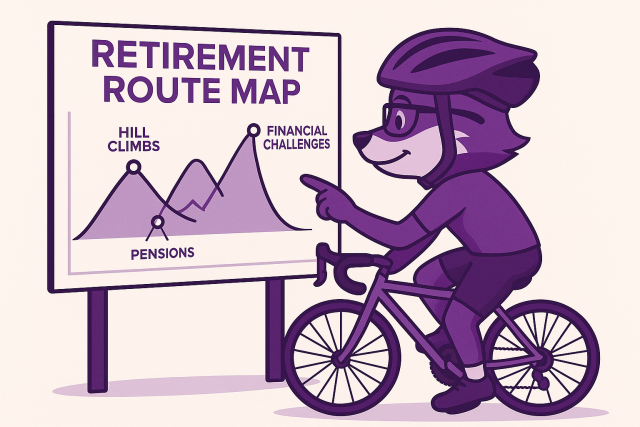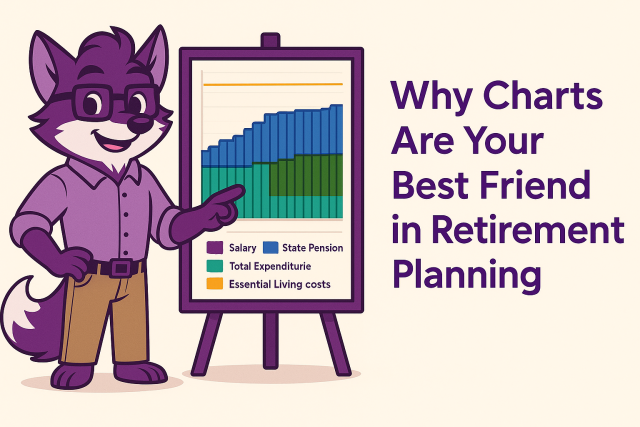“Can I Afford to Retire?” The Most Common Question I’m Asked and How to Answer It

Retirement should be a time of freedom, not fear. Yet one question comes up more than any other when I meet with clients aged 40 to 60:
“Can I afford to retire?”
It’s a simple question but not an easy one. That’s because it’s not just about money, it’s about confidence, clarity, and knowing what you want from life after work. Also, let’s be honest, it’s about whether you can sip coffee in your dressing gown at 10am on a Tuesday without guilt or tee off midweek without having to pull a sickie.
In this blog, I’ll walk you through how I help people move from uncertainty to clarity using structured, visual planning and how you can begin answering this question for yourself.
1. Start With Your Vision
Before we talk about numbers, we need to talk about you. What does retirement mean to you?
This isn’t fluff. Your goals shape the entire financial plan. Retirement isn’t just about “having enough”; it’s about funding the life you want. (Yes, including that dream campervan, a few golf trips to Portugal, or finally joining that cycling club you’ve followed on Strava for years.)
2. Map Your Spending Needs
Once we know what you want to do, we can work out what it will cost. We look at:
- This becomes your personal retirement budget. It’s the foundation of everything that follows. And no, Amazon Prime and Netflix aren’t technically essential, but let’s be realistic. Also, a new road bike every few years? Let’s call that an investment in health.
3. Assess Your Income Sources
Now we look at the money you’ll have coming in:
We also consider when these income sources become available and how tax-efficient they are. Because nothing kills retirement vibes like a surprise tax bill.
4. Build a Cashflow Model
Here’s where the magic happens. We take all the above and build a timeline that shows how your money will flow in and out over the coming decades.
The goal? To visually demonstrate:
Clients often tell me this is the first time they’ve felt like they can see their future clearly. It’s like Google Maps for your money, just fewer roundabouts (and more chances to budget for a golf holiday or a summer of sportive events).
5. Stress-Test the Plan
No plan is complete without a few curveballs. We look at questions like:
We model different scenarios to ensure your plan can adapt if life doesn’t go exactly as expected. (Spoiler: it rarely does.)
So, Can You Afford to Retire?
If you’re asking the question, you’re not alone. But here’s the truth:
It’s not about having a “magic number.” It’s about understanding what you need, what you have, and how to bridge the gap with confidence.
The good news? With the right plan in place, many people realise they can retire sooner than they thought. And yes, that might mean more time in your garden, on your bike, or finally getting your handicap down and less time in team meetings that could have been emails.
Want help answering this question for yourself?
You can download my free retirement checklist or book a no-obligation clarity call at https://calendly.com/tom-purplefoxfp/45min




